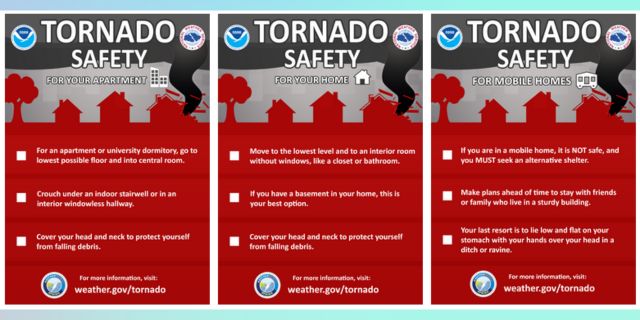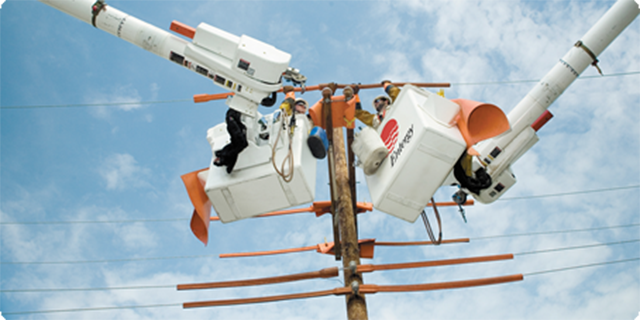Statewide tornado drill part of Severe Weather Preparedness Week in Mississippi
Published 10:05 pm Tuesday, October 3, 2023
Alert tones will be quite busy in Mississippi Wednesday. Although not affiliated with the scheduled national FEMA test, a similar test will sound Wednesday morning across Mississippi.
This week is Severe Weather Preparedness Week in Mississippi. As part of this publicity, Wednesday focuses on fall and winter tornadoes. A statewide drill will be conducted at 9:15 am.,. using the Routine Weekly Test through NOAA Weather Radio All-Hazards. The National Weather Service strongly encourages local emergency managers, school officials, businesses, and home owners to participate in this drill. The best way to learn what to do when severe weather approaches is to practice when the weather is not threatening.
Notable Fall/Winter Tornado Events
- December 5, 1953 – 3 tornadoes occurred across Mississippi, with two in the current NWS Jackson coverage area. One was an F3 in northeast Louisiana and southeast Arkansas and was on the ground for 57 miles. The strongest tornado was an F5 which struck Vicksburg, MS around 5PM. The tornado was only on the ground for 7 miles total. Over $25 million ($200 million in 2013 dollars) in damages occurred. This tornado is more widely known as the Vicksburg Tornado. 38 fatalities occurred, which are the most fatalities of any tornado or tornado event in the month of December. A majority of the fatalities in one location were in Saenger Theatre, which was mostly destroyed. 270 injuries also occurred.
- November 21-22, 1992 – Large tornado outbreak, 14 total tornadoes with 1 long track F4 (128 miles), 5th longest. This tornado is more widely known as the Brandon Tornado. A total of 15 fatalities occurred during that horrific night.
- November 24, 2001 – Large tornado outbreak, 14 total tornadoes, 2 F4s and 2F3s. One of the F4s was the Fairfield Tornado. A total of 7 fatalities occurred across the region that early morning
- November 10-11, 2002 – Veterans Day Outbreak, MS was on the southern end of the event but still had 7 total tornadoes
- November 24, 2004 – Large tornado outbreak, 21 total tornadoes, 1 fatality
- November 15, 2006 – Tornado event across southeast MS, 2 F3s
- February 5, 2008 – Significant, deadly regional outbreak of tornadoes across the South and Ohio Valley. Over 50 deaths occurred across the outbreak region. While most of the tornadoes occurred north of Mississippi, there were 12 tornadoes in north and central Mississippi. The strongest was an EF3 that went through Lafayette County.
- November 29-30, 2010 – Tornado event with 13 total tornadoes.
- October 17-18, 2012 – Early fall tornado event with a rare October EF3 tornado.
- December 25, 2012 – A significant regional tornado outbreak occurred on Christmas Day. 5 tornadoes occurred in Mississippi, with the strongest being an EF3 that was on the ground for 61 miles through southeast Mississippi. Overall, 20 injuries occurred from tornadoes that day.
- December 23, 2014 – A significant regional tornado outbreak occurred on just two days before Christmas. 5 tornadoes occurred in Mississippi, with the strongest being an EF3 that was on the ground for 12 miles through southeast Mississippi, including the city of Columbia. Overall, 5 fatalities occurred, with 3 being from the EF3 in Columbia and 2 from EF2 near Laurel. 50 injuries occurred from tornadoes that day. Five fatalities were the highest number for an event in December since the 1953 Vicksburg F5 tornado.
- December 23, 2015 – A significant tornado outbreak occurred again just two days before Christmas. An EF3 and an EF4 tornado tore across northern Mississippi, resulting in 11 fatalities and 64 injuries. Other weaker tornadoes also occurred. Later, on Christmas Day, an EF0 tornado struck Smith County and an EF1 tornado affected Covington County just three days after Christmas.
- January 21, 2017 – An EF3 tornado tore through Hattiesburg and Petal during the early morning hours, resulting in dozens of injuries and four fatalities.
Trending
Tornado Safety Guidelines
- In homes or small buildings, go to the basement or to an interior room, interior hall, or to small rooms such as a closet or bathroom on the lowest level. Put on a helmet to protect your head from flying debris. If you do not have a helmet, use a blanket, couch cushion, pillow, mattress, or other item that will provide more protection than simply your hands.
- In schools, nursing homes, hospitals and shopping centers, go to a pre-designated shelter area. Interior hallways on the lowest floor are usually best. Stay away from large windows or glassed areas. Also, stay away from large rooms like dining halls or gymnasiums because they usually have weakly supported roofs.
- If you are in mobile homes or a vehicle, leave it and go to a substantial structure. If there is no shelter nearby, lie flat in the nearest ditch, ravine, gully, or culvert with your hands shielding your head. However, this may not be a good option if heavy rain is falling.
- Stay away from windows. Do not bother opening them. Opening windows will not protect the structure but will in fact lead to more damage if hit by a tornado. Also, you will just waste time and put yourself and possibly others at greater risk. Use those valuable few seconds to find safety.
Remember, tornadoes form very quickly and may occur with little or no advanced warning. You may have only a few seconds to find shelter. When a tornado threatens, your immediate action can save your life. Take the time during Severe Weather Preparedness Week to teach your children or your co-workers about tornadoes. Show them the best shelter areas in your home or business.






